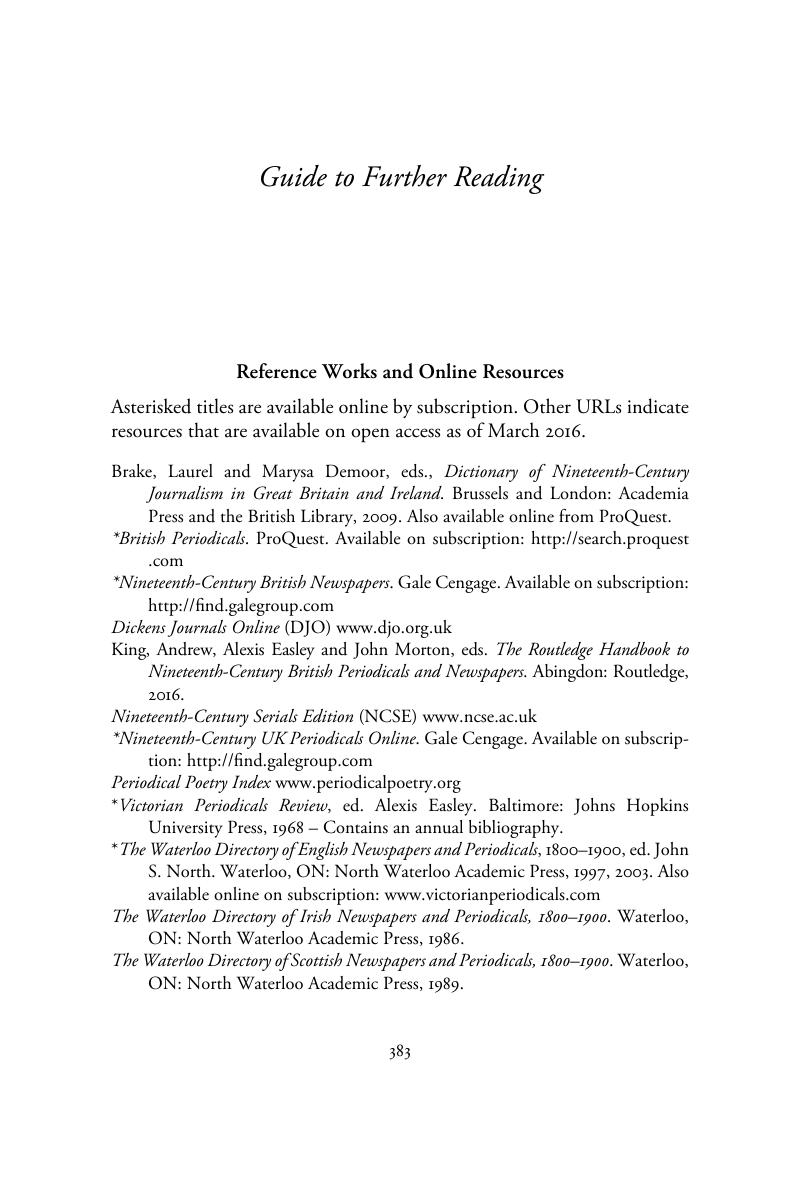Book contents
- Journalism and the Periodical Press in Nineteenth-Century Britain
- Journalism and the Periodical Press in Nineteenth-Century Britain
- Copyright page
- Contents
- Illustrations
- Tables
- Notes on Contributors
- Acknowledgements
- Chronology of Publications and Events
- Chapter 1 Introduction
- Part I Periodicals, Genres and the Production of Print
- Part II The Press and the Public
- Part III The ‘Globalisation’ of the Nineteenth-Century Press
- Part IV Journalists and Journalism
- Guide to Further Reading
- Index
- References
Guide to Further Reading
Published online by Cambridge University Press: 24 March 2017
- Journalism and the Periodical Press in Nineteenth-Century Britain
- Journalism and the Periodical Press in Nineteenth-Century Britain
- Copyright page
- Contents
- Illustrations
- Tables
- Notes on Contributors
- Acknowledgements
- Chronology of Publications and Events
- Chapter 1 Introduction
- Part I Periodicals, Genres and the Production of Print
- Part II The Press and the Public
- Part III The ‘Globalisation’ of the Nineteenth-Century Press
- Part IV Journalists and Journalism
- Guide to Further Reading
- Index
- References
Summary

- Type
- Chapter
- Information
- Publisher: Cambridge University PressPrint publication year: 2017

